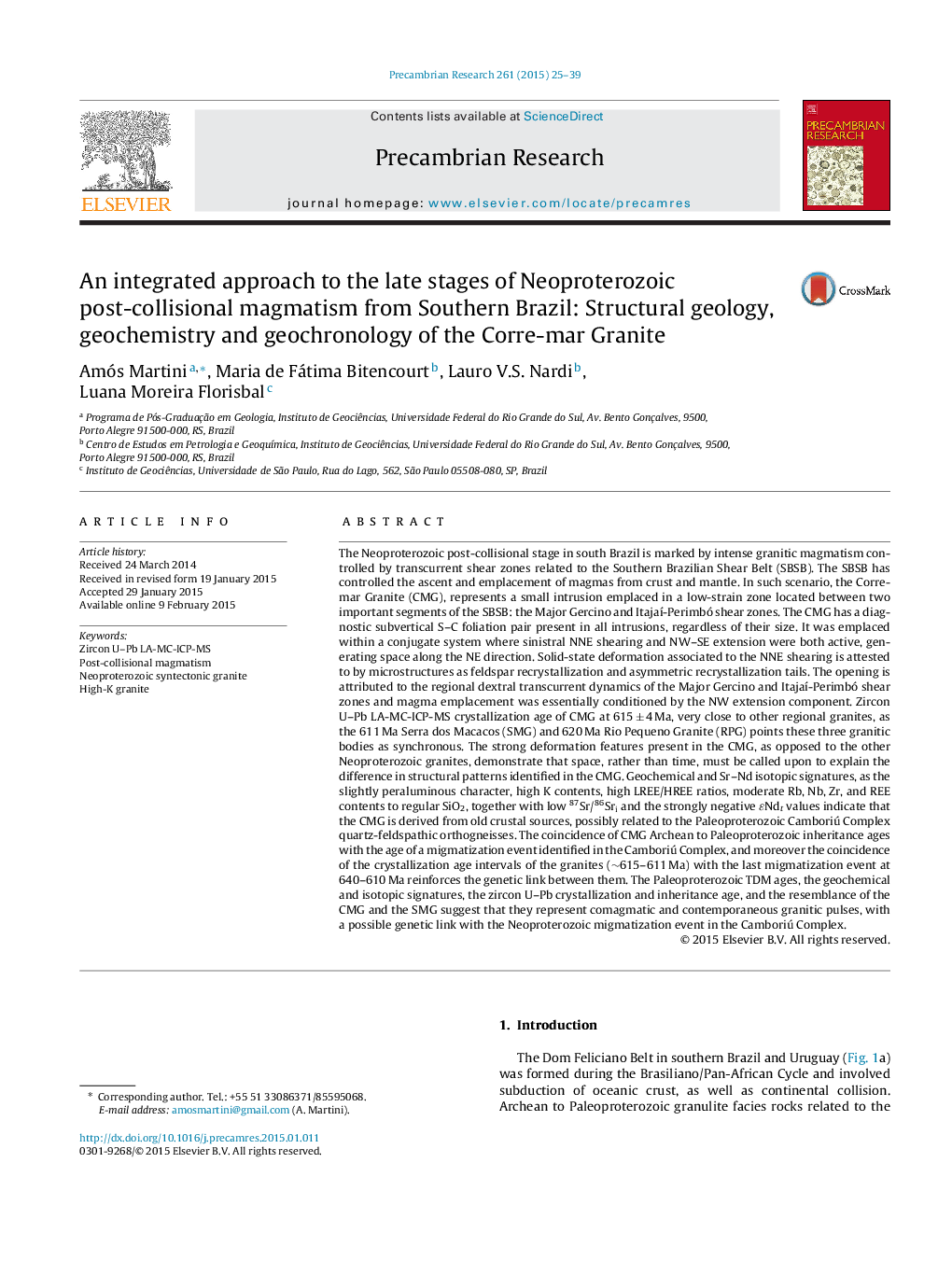| کد مقاله | کد نشریه | سال انتشار | مقاله انگلیسی | نسخه تمام متن |
|---|---|---|---|---|
| 4722711 | 1639614 | 2015 | 15 صفحه PDF | دانلود رایگان |

• Neoproterozoic post-collisional slightly peraluminous bt–ms granite from south Brazil.
• The role of transcurrent tectonics on syntectonic granite genesis and emplacement.
• Geochemical and U–Pb data attest Camboriú Complex migmatite as source for CMG.
• Low-fraction melt, biotite breakdown is the process that generates the K-rich CMG.
The Neoproterozoic post-collisional stage in south Brazil is marked by intense granitic magmatism controlled by transcurrent shear zones related to the Southern Brazilian Shear Belt (SBSB). The SBSB has controlled the ascent and emplacement of magmas from crust and mantle. In such scenario, the Corre-mar Granite (CMG), represents a small intrusion emplaced in a low-strain zone located between two important segments of the SBSB: the Major Gercino and Itajaí-Perimbó shear zones. The CMG has a diagnostic subvertical S–C foliation pair present in all intrusions, regardless of their size. It was emplaced within a conjugate system where sinistral NNE shearing and NW–SE extension were both active, generating space along the NE direction. Solid-state deformation associated to the NNE shearing is attested to by microstructures as feldspar recrystallization and asymmetric recrystallization tails. The opening is attributed to the regional dextral transcurrent dynamics of the Major Gercino and Itajaí-Perimbó shear zones and magma emplacement was essentially conditioned by the NW extension component. Zircon U–Pb LA-MC-ICP-MS crystallization age of CMG at 615 ± 4 Ma, very close to other regional granites, as the 611 Ma Serra dos Macacos (SMG) and 620 Ma Rio Pequeno Granite (RPG) points these three granitic bodies as synchronous. The strong deformation features present in the CMG, as opposed to the other Neoproterozoic granites, demonstrate that space, rather than time, must be called upon to explain the difference in structural patterns identified in the CMG. Geochemical and Sr–Nd isotopic signatures, as the slightly peraluminous character, high K contents, high LREE/HREE ratios, moderate Rb, Nb, Zr, and REE contents to regular SiO2, together with low 87Sr/86Sri and the strongly negative ɛNdt values indicate that the CMG is derived from old crustal sources, possibly related to the Paleoproterozoic Camboriú Complex quartz-feldspathic orthogneisses. The coincidence of CMG Archean to Paleoproterozoic inheritance ages with the age of a migmatization event identified in the Camboriú Complex, and moreover the coincidence of the crystallization age intervals of the granites (∼615–611 Ma) with the last migmatization event at 640–610 Ma reinforces the genetic link between them. The Paleoproterozoic TDM ages, the geochemical and isotopic signatures, the zircon U–Pb crystallization and inheritance age, and the resemblance of the CMG and the SMG suggest that they represent comagmatic and contemporaneous granitic pulses, with a possible genetic link with the Neoproterozoic migmatization event in the Camboriú Complex.
Figure optionsDownload as PowerPoint slide
Journal: Precambrian Research - Volume 261, May 2015, Pages 25–39